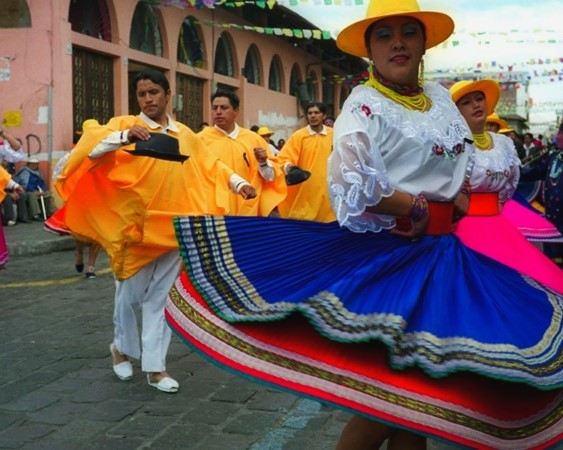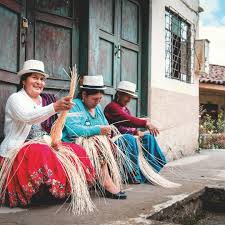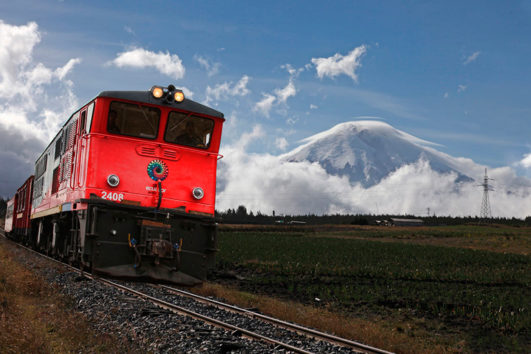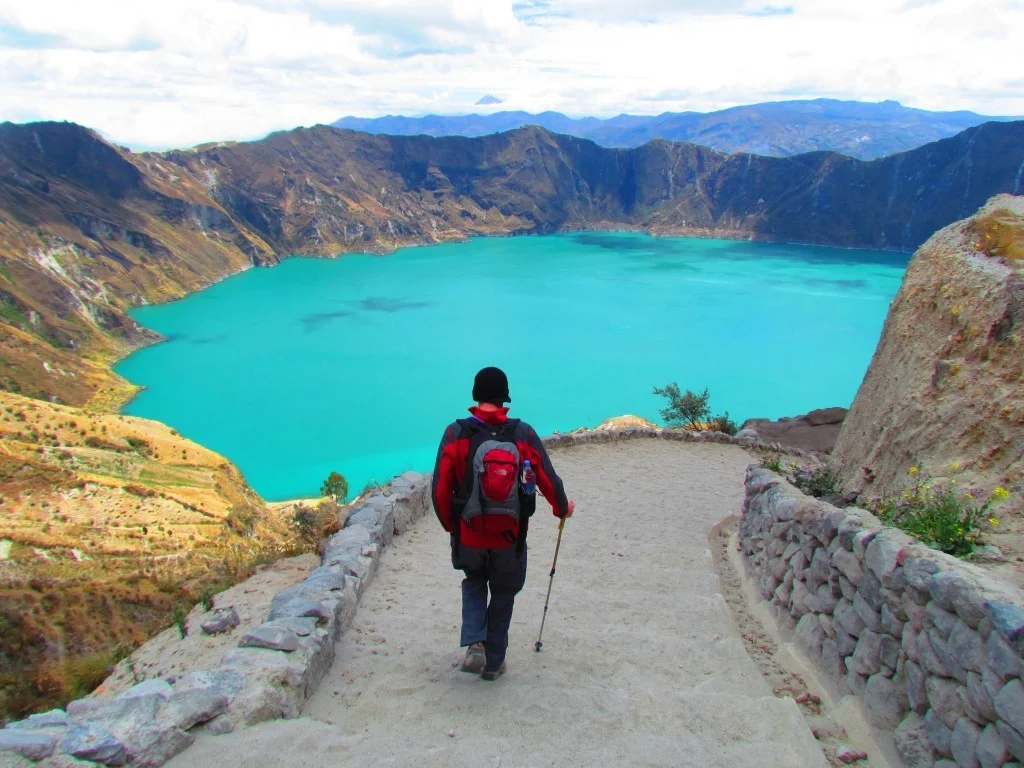Welcome to the vibrant and culturally rich city of Cuenca, Ecuador, where tradition and art come alive through dance. Nestled in the Andes, Cuenca is not only a UNESCO World Heritage Site but also a hub of traditional dances that captivate locals and visitors alike. From the rhythmic beats of the Pasillo to the energetic steps of the Sanjuanito. Cuenca’s dances offer a window into the heart and soul of its people.
Imagine yourself in a bustling plaza, the air filled with the sounds of live music, and dancers adorned in colorful costumes moving in perfect harmony. These traditional dances are more than just performances; they are a celebration of Cuenca’s rich history and cultural diversity. Each dance tells a story, passed down through generations, reflecting the city’s indigenous, Spanish, and African influences.
At Hotel Boutique Mansión Alcázar, we invite you to immerse yourself in this artistic journey. Our location in the historic center of Cuenca provides the perfect base to explore and experience these cultural treasures. Whether you’re a seasoned traveler or a curious tourist, witnessing Cuenca’s traditional dances is an unforgettable experience that will deepen your appreciation for Ecuador’s heritage.
Throughout this blog post, we will delve into the history and styles of Cuenca’s traditional dances. Highlight where you can watch or participate in these captivating performances. And offer tips on how to make the most of your visit. Join us as we embark on an artistic journey through the heart of Cuenca. Where every dance step brings the city’s history to life.
The Historical Roots of Cuenca’s Traditional Dances
Cuenca’s traditional dances are a captivating blend of indigenous, Spanish, and African influences. Each contributing to the rich tapestry of cultural expression that defines the city’s artistic heritage. The origins and evolution of these dances are deeply intertwined with key historical events and cultural exchanges that have shaped Cuenca over centuries.
From the rhythmic elegance of the Pasillo to the soulful melodies of the Yarabi. Each dance tells a story of Cuenca’s past, reflecting the diverse influences that have converged in this vibrant city. Let’s delve into the historical roots of some of Cuenca’s most iconic traditional dances.
Indigenous Influences
The indigenous peoples of the Andean region have a profound connection to dance. Using it as a form of storytelling and spiritual expression long before the arrival of the Spanish. Traditional dances such as the Sanjuanito, which is still performed today, have their roots in pre-Columbian rituals and celebrations. The Sanjuanito is characterized by its lively rhythm and communal nature. It was originally a dance of the Kichwa people, performed during the Inti Raymi festival to honor the sun god Inti.
Another significant indigenous dance is the Yumbo, which originated from the Yumbo people of the Amazon. This dance, performed to the beat of drums and flutes, was a ritualistic expression meant to connect with the natural world and the spirits. The Yumbo dance has evolved over time but still retains its ceremonial essence, often performed during festivals and community gatherings.
Spanish Colonial Era
The arrival of the Spanish in the 16th century brought significant changes to the cultural landscape of Cuenca. The Spanish introduced new musical instruments, dance forms, and religious practices, which began to blend with indigenous traditions. One of the most notable dances from this period is the Pasillo, which emerged as a fusion of the Spanish waltz and indigenous rhythms.
The Pasillo, often referred to as the national dance of Ecuador, is characterized by its slow, melancholic melodies and graceful movements. It became a popular form of expression during the colonial era, reflecting the social and cultural dynamics of the time. The Yarabi, another dance that emerged during this period, is known for its poignant lyrics and emotive style, often depicting themes of love and longing.
African Influence
The African influence on Cuenca’s traditional dances is a testament to the city’s complex history of cultural exchange. Enslaved Africans brought to Ecuador during the colonial era contributed their own musical and dance traditions, which gradually integrated with existing indigenous and Spanish forms. This fusion gave rise to dances such as the Bomba, which is characterized by its energetic rhythm and call-and-response singing.
The Bomba, originally from the coastal region of Ecuador, made its way to the highlands and became a part of Cuenca’s dance repertoire. It is performed with a lively beat, accompanied by drums and marimbas, and often features improvisational elements that highlight the dancers’ creativity and skill.
Understanding the historical roots of Cuenca’s traditional dances provides a deeper appreciation for the cultural richness and diversity that define this UNESCO World Heritage Site. As you explore Cuenca, take the opportunity to witness these dances firsthand, whether in a bustling plaza or a local festival, and immerse yourself in the artistic journey that brings the city’s history to life.
Exploring the Different Styles of Cuenca’s Traditional Dances
Cuenca’s traditional dances are a vibrant tapestry of cultural expressions, each with its own unique characteristics and historical significance. This section delves into the most prominent dance styles, highlighting their music, costumes, and performance contexts.
From the rhythmic elegance of the Pasillo to the energetic steps of the Sanjuanito, Cuenca’s dance styles offer a fascinating glimpse into the city’s rich cultural heritage. Let’s explore some of these captivating dance forms in detail.
Pasillo: The Dance of Elegance
The Pasillo is often referred to as the national dance of Ecuador, and it holds a special place in Cuenca’s cultural landscape. Originating during the Spanish colonial era, the Pasillo is a fusion of the European waltz and indigenous rhythms. This dance is characterized by its slow, melancholic melodies and graceful movements, often accompanied by guitars and mandolins.
Performers of the Pasillo don elegant costumes that reflect the dance’s refined nature. Men typically wear formal suits, while women grace the stage in flowing dresses adorned with intricate lace and embroidery. The Pasillo is not just a dance; it is a poignant expression of love, longing, and the complexities of life.
Sanjuanito: The Dance of Joy
The Sanjuanito is one of the most beloved traditional dances in Cuenca, known for its lively rhythm and communal spirit. This dance has its roots in the indigenous Kichwa culture and is traditionally performed during the Inti Raymi festival to honor the sun god Inti. The Sanjuanito is characterized by its upbeat tempo and repetitive steps, which create a sense of unity and celebration among dancers.
Costumes for the Sanjuanito are vibrant and colorful, reflecting the joyous nature of the dance. Dancers often wear traditional Andean attire, including ponchos, skirts, and hats adorned with feathers and beads. The music, played on instruments such as flutes and drums, adds to the festive atmosphere, making the Sanjuanito a highlight of any cultural event in Cuenca.
Yumbo: The Dance of the Amazon
The Yumbo dance, originating from the Yumbo people of the Amazon, is a captivating blend of ritualistic and celebratory elements. This dance was traditionally performed to connect with the natural world and the spirits, and it retains its ceremonial essence even today. The Yumbo is characterized by its rhythmic drumming and the use of flutes, creating a hypnotic and spiritual atmosphere.
Dancers in the Yumbo often wear costumes made from natural materials, such as feathers, beads, and animal skins, symbolizing their connection to the earth and the spirits. The movements are dynamic and expressive, often involving jumps and spins that mimic the motions of animals and nature. The Yumbo dance is a powerful reminder of Cuenca’s deep-rooted connection to the Amazonian heritage.
Bomba: The Dance of African Heritage
The Bomba dance is a testament to the African influence on Cuenca’s cultural tapestry. Brought to Ecuador by enslaved Africans during the colonial era, the Bomba is characterized by its energetic rhythm and call-and-response singing. This dance is a celebration of resilience and creativity, often performed with improvisational elements that showcase the dancers’ skills.
Costumes for the Bomba are typically vibrant and expressive, with dancers wearing brightly colored skirts and headwraps. The music, driven by drums and marimbas, creates an infectious beat that invites everyone to join in the celebration. The Bomba dance is a lively and spirited expression of Cuenca’s diverse cultural heritage.
As you explore Cuenca, take the opportunity to witness these traditional dances firsthand. Whether in a bustling plaza or during a local festival, these dances offer a window into the heart and soul of Cuenca’s rich cultural heritage. For more information on where to experience these captivating performances, visit our website.
Where to Experience Cuenca’s Traditional Dances
Cuenca offers numerous opportunities to experience its traditional dances, whether through performances, festivals, or dance classes. This section provides a guide to the best places to watch or participate in these dances.
From bustling plazas to intimate cultural centers, Cuenca’s vibrant dance scene is accessible to all. Here’s where you can immerse yourself in the rhythmic beauty of Cuenca’s traditional dances.
Plazas and Public Spaces
Cuenca’s plazas are the heart of its cultural life, often hosting spontaneous dance performances and organized events. Parque Calderón, located in the historic center, is a popular spot where you can witness traditional dances during weekends and festivals. The lively atmosphere, combined with the backdrop of colonial architecture, makes it a perfect place to experience the essence of Cuenca’s dance traditions.
Another notable location is Plaza de San Francisco, known for its vibrant market and cultural activities. Here, you can enjoy performances by local dance troupes, showcasing dances like the Sanjuanito and Pasillo. These public spaces provide an authentic and accessible way to engage with Cuenca’s dance heritage.
Cultural Centers and Theaters
For a more structured and immersive experience, visit one of Cuenca’s cultural centers or theaters. The Casa de la Cultura Ecuatoriana hosts regular dance performances and cultural events, offering a deeper insight into the artistic traditions of the region. The center’s programming often includes traditional dance shows, workshops, and exhibitions, making it a hub for cultural enthusiasts.
The Teatro Sucre is another excellent venue to catch high-quality dance performances. This historic theater, located in the heart of Cuenca, frequently features traditional dance shows as part of its diverse cultural offerings. Attending a performance here provides a unique opportunity to appreciate the skill and artistry of Cuenca’s dancers in a formal setting.
Festivals and Events
Cuenca’s festivals are a highlight for anyone interested in traditional dances. The Inti Raymi festival, celebrated in June, is one of the most significant events, featuring the Sanjuanito dance as a central element. This festival, which honors the sun god Inti, includes vibrant parades, music, and dance performances that bring the streets of Cuenca to life.
Another major event is the Pase del Niño Viajero, held in December. This religious and cultural procession includes various traditional dances, providing a festive and immersive experience. The combination of colorful costumes, lively music, and communal spirit makes it a must-see for visitors.
Dance Schools and Workshops
If you’re eager to learn the steps yourself, Cuenca offers several dance schools and workshops. Academia de Danza Folklórica provides classes in traditional Ecuadorian dances, including the Pasillo, Sanjuanito, and Bomba. These classes are open to all skill levels and offer a hands-on way to connect with the local culture.
Another option is the Centro Cultural Municipal, which occasionally offers dance workshops as part of its cultural programming. Participating in a workshop here allows you to learn from experienced instructors and gain a deeper appreciation for the techniques and traditions behind Cuenca’s dances.
Exploring Cuenca’s traditional dances through these various venues and events will enrich your visit and provide lasting memories. For more information on cultural activities and accommodations, visit our website.
Embrace the Rhythm of Cuenca
Cuenca’s traditional dances are more than just a spectacle; they are a profound expression of the city’s rich cultural heritage. From the rhythmic elegance of the Pasillo to the vibrant energy of the Sanjuanito, these dances offer a unique glimpse into the heart and soul of Cuenca. The historical influences of indigenous, Spanish, and African cultures come alive in every step, making each performance a living testament to the city’s diverse history.
Whether you find yourself in a bustling plaza, a cultural center, or a local festival. The opportunity to witness Cuenca’s traditional dances is an experience not to be missed. These performances are a celebration of community and tradition. Inviting both locals and visitors to join in the rhythm and spirit of the dance. The intricate costumes, soulful music, and lively movements create an unforgettable atmosphere that captures the essence of Cuenca’s artistic journey.
For those eager to dive deeper into this cultural experience, consider signing up for a dance workshop or class. Places like the Academia de Danza Folklórica and the Centro Cultural Municipal offer hands-on opportunities to learn the steps and understand the stories behind these traditional dances. Engaging in a dance class not only enriches your visit but also connects you more deeply with the local culture.
As you explore Cuenca, take a moment to immerse yourself in its vibrant dance traditions. Visit a festival, watch a performance, or even join a dance class to fully embrace the rhythm of Cuenca. For more information on where to experience these captivating dances, visit our website. Let the dances of Cuenca inspire and move you, leaving you with memories that will last a lifetime.
Key Takeaways
- Witness traditional dances in plazas like Parque Calderón and Plaza de San Francisco.
- Attend performances at cultural centers such as the Casa de la Cultura Ecuatoriana and Teatro Sucre.
- Join in the festivities during major events like the Inti Raymi festival and the Pase del Niño Viajero.
- Participate in dance workshops at the Academia de Danza Folklórica or the Centro Cultural Municipal.
Embrace the rhythm, and let Cuenca’s traditional dances guide you on an artistic journey like no other.




